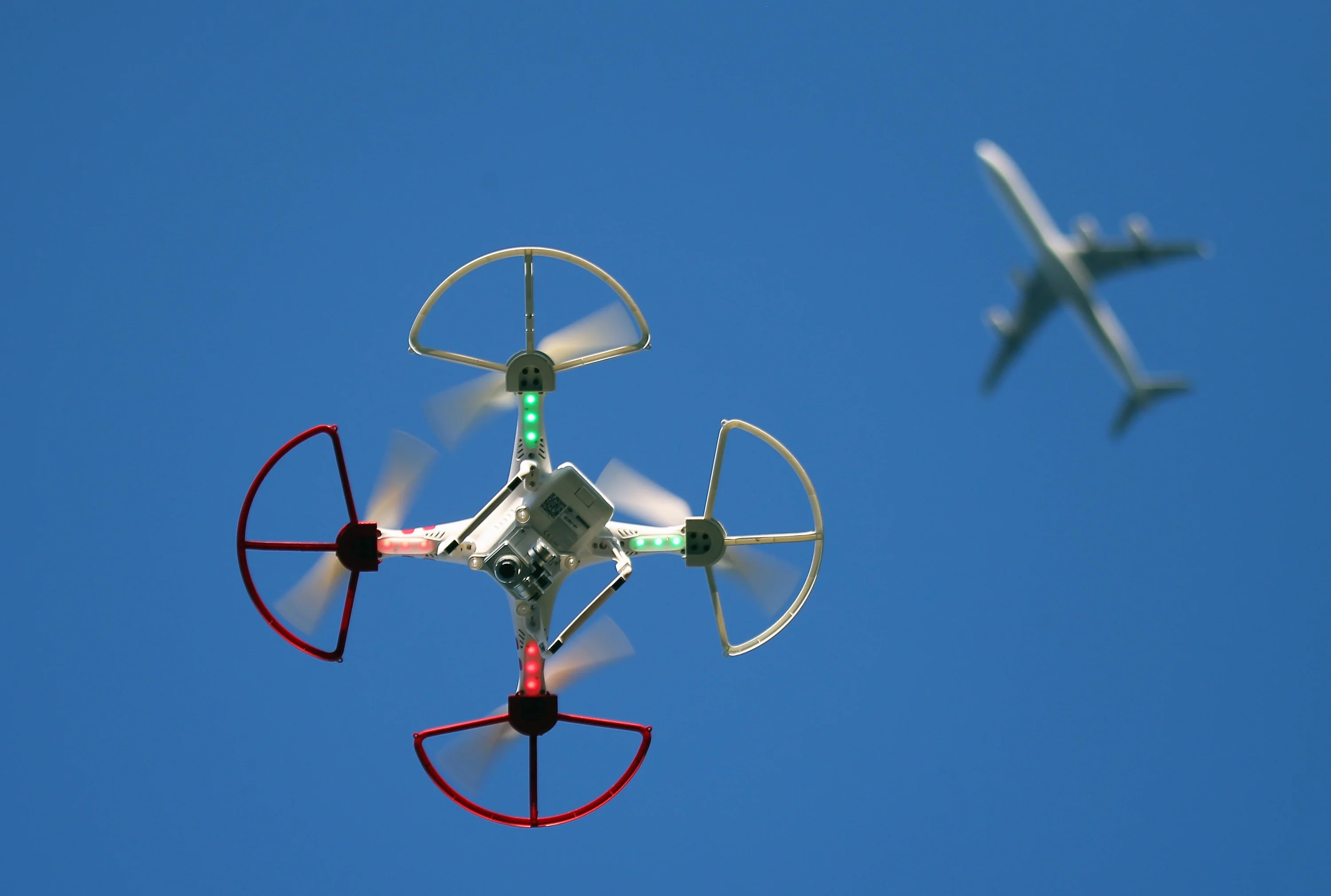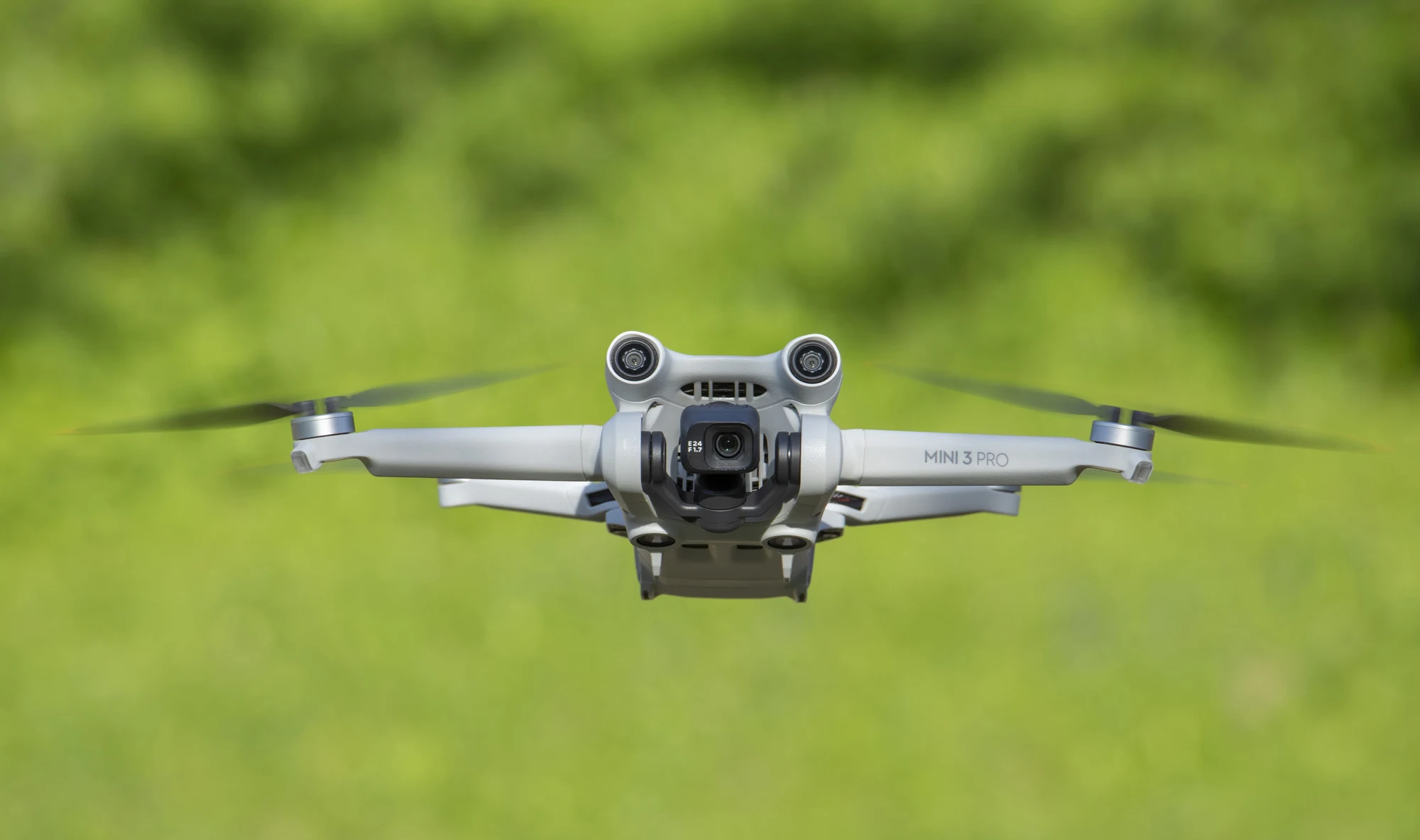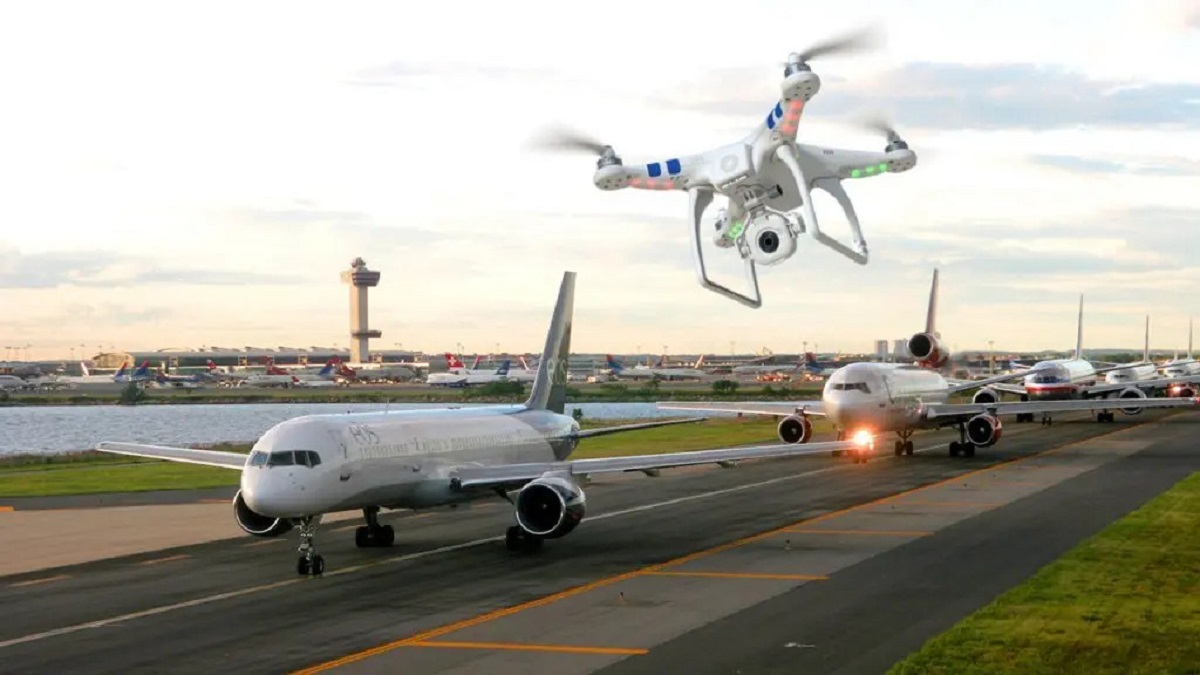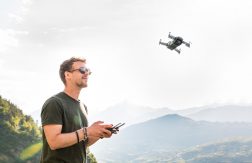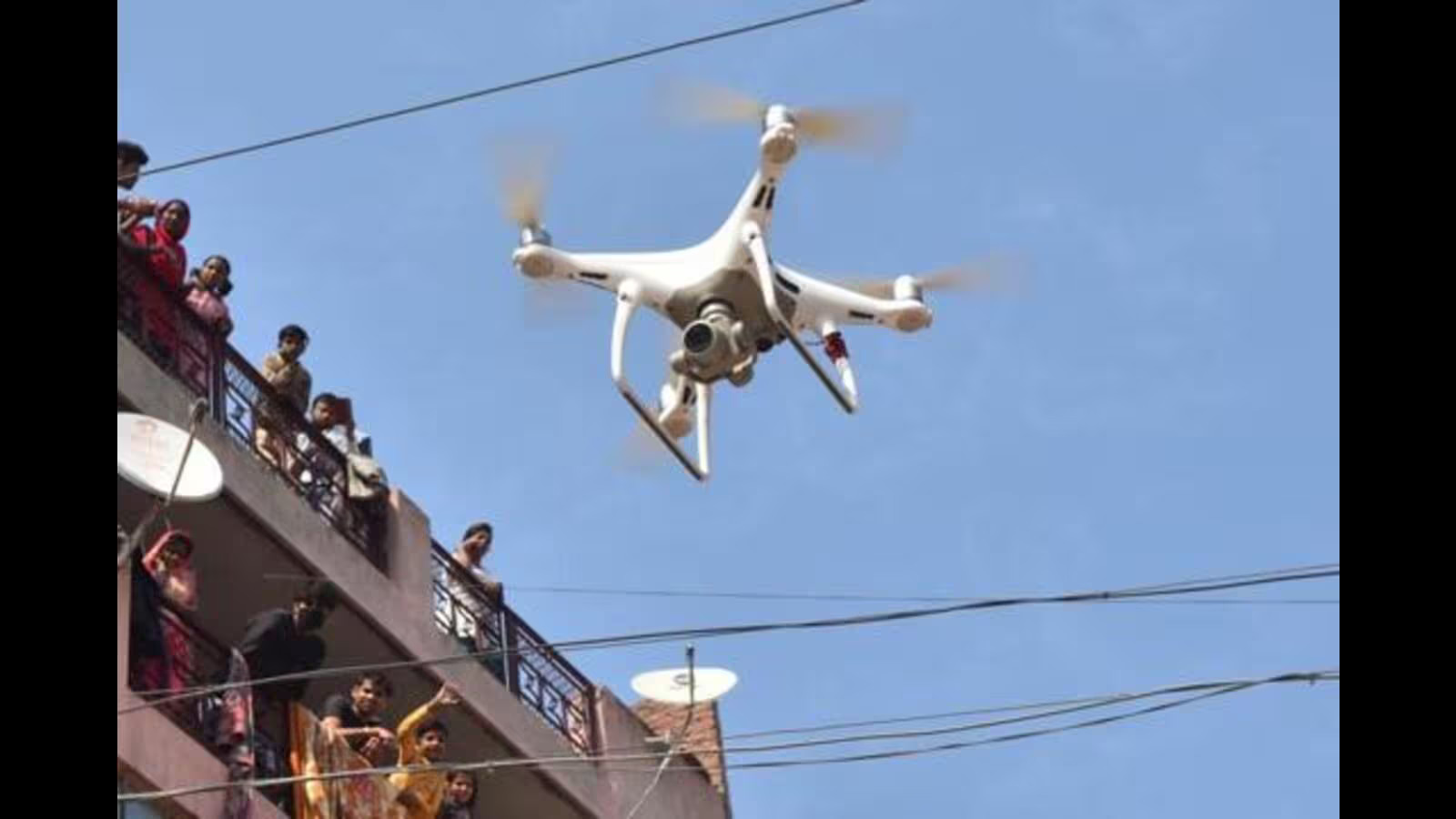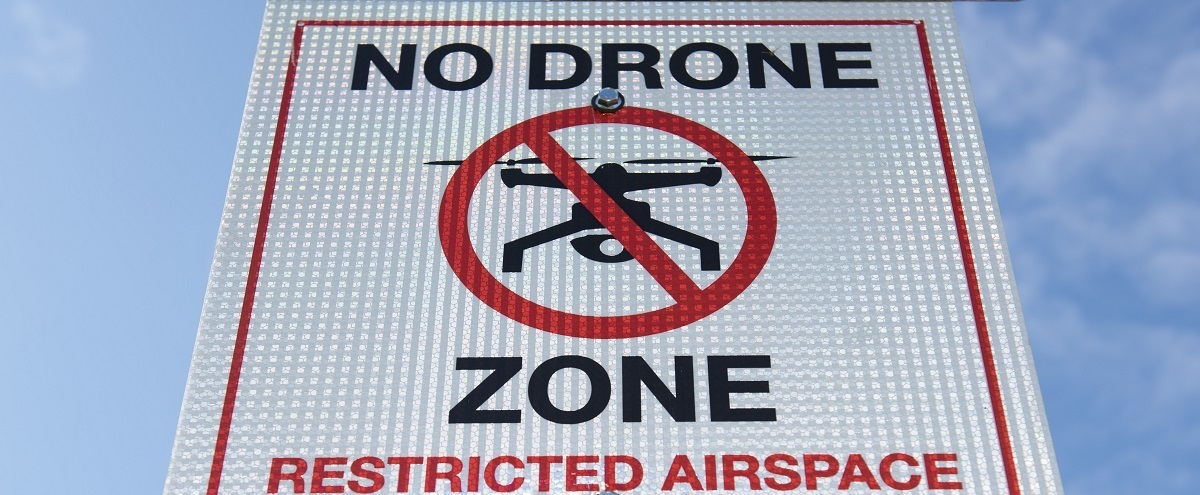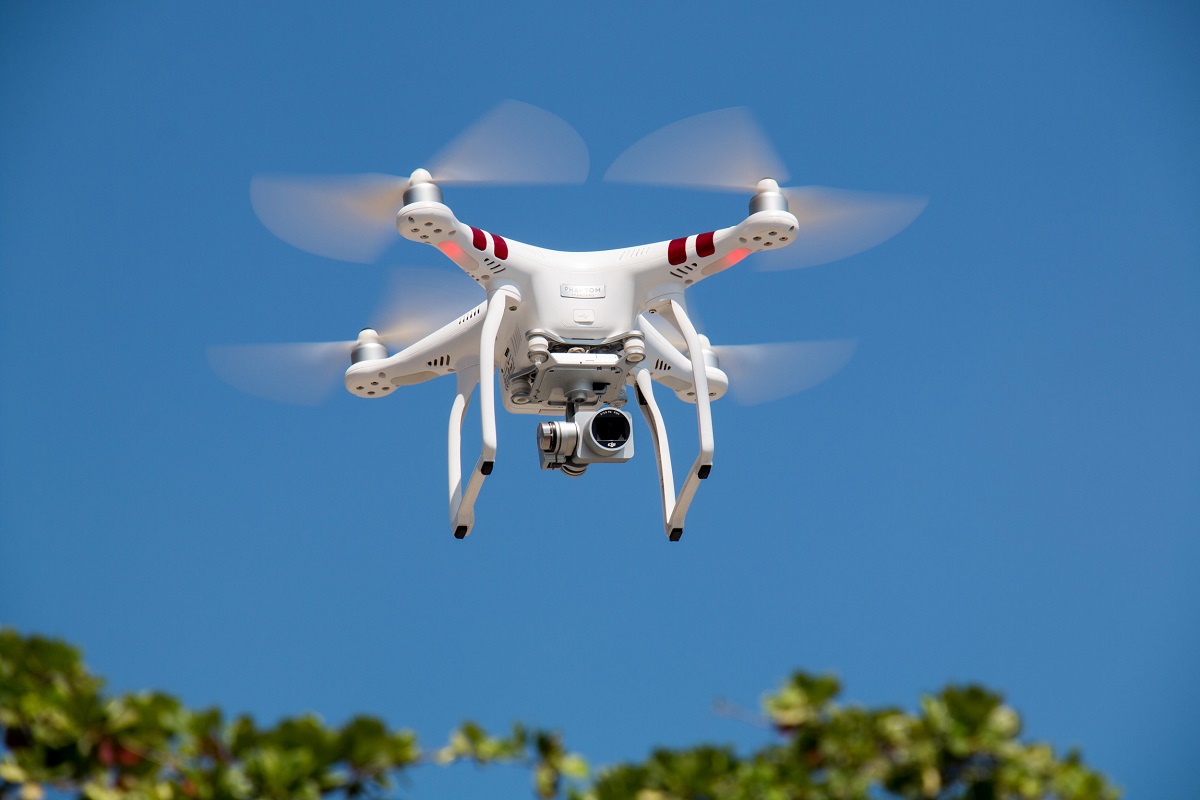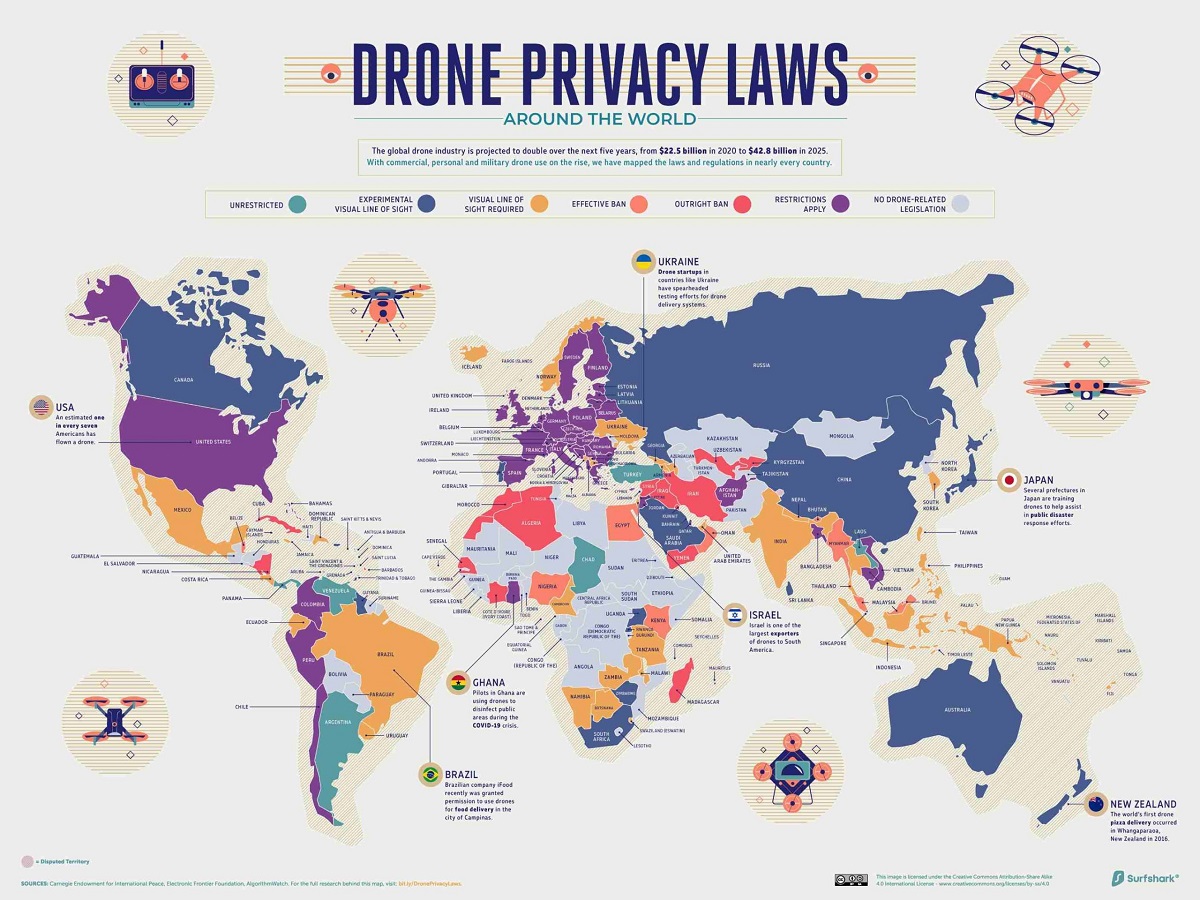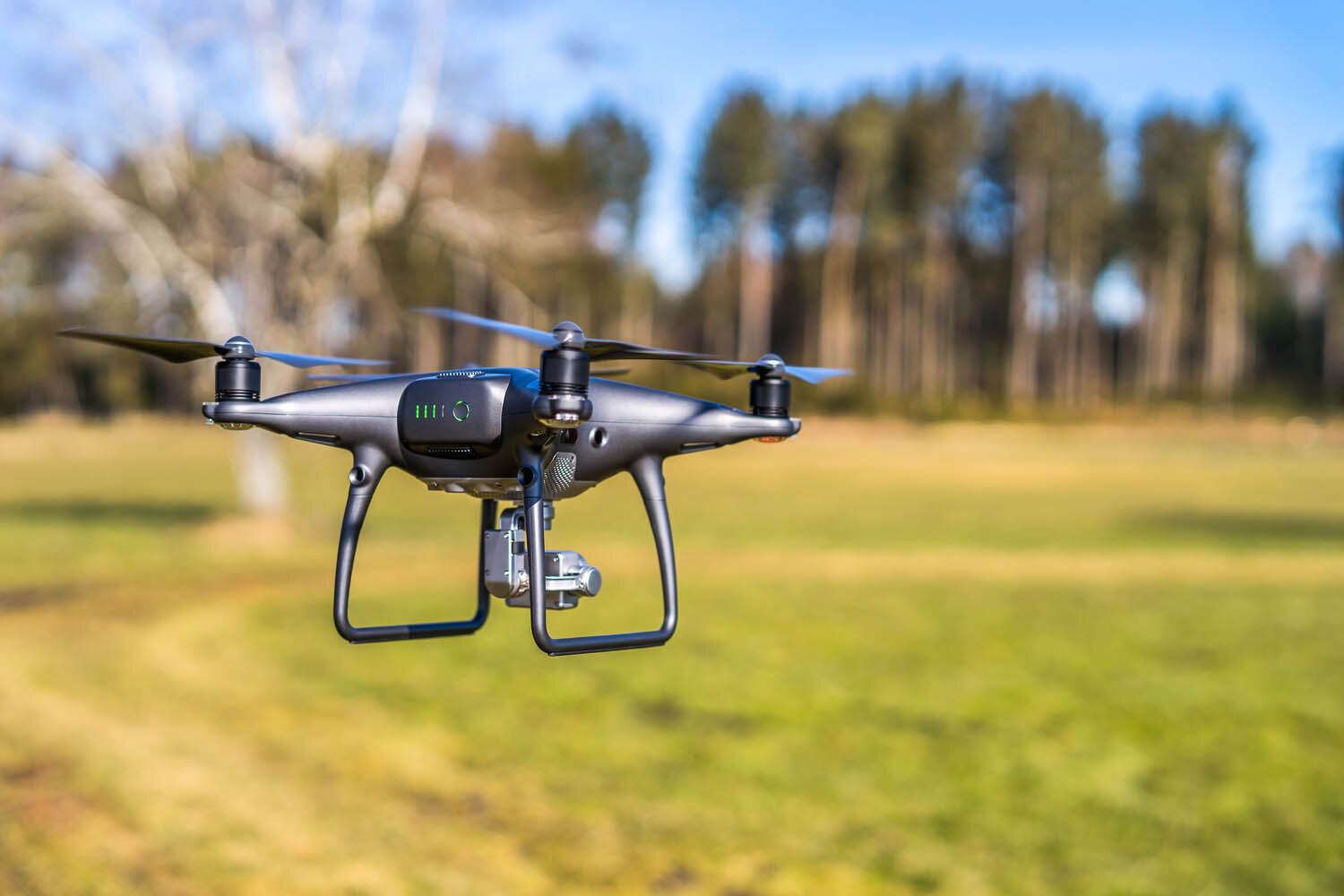Introduction
Welcome to the world of drones, where the sky is no longer the limit for capturing breathtaking aerial footage or exploring new perspectives. However, when it comes to flying drones, there are certain restrictions and guidelines that need to be followed to ensure both safety and legality. One of the most crucial considerations is how close you can fly a drone to an airport.
With airports being highly regulated and tightly controlled environments, it is important to understand the restrictions for drone flyers. Failure to adhere to these regulations can pose serious risks to aviation and potentially lead to legal consequences. So, let’s explore the guidelines and minimum distances required by authorities to fly drones near airports, as well as the safety precautions that should be taken.
Understanding airport no-fly zones is essential for anyone operating a drone. These areas are designated as prohibited airspace to prevent any interference with aircraft operations. No-fly zones are established to ensure the safety of pilots, passengers, and people on the ground.
The regulatory guidelines vary from country to country, and it is crucial to be aware of the specific laws and regulations in your location. Most aviation authorities have clear guidelines and restrictions when it comes to flying drones near airports. These regulations are put in place to prevent any potential hazards and maintain the integrity of the airspace.
In the following sections, we will delve deeper into the minimum distances required by authorities, the concept of controlled airspace, how to obtain special permissions for flying in restricted areas, and the various safety precautions that should be taken into consideration when operating a drone near an airport.
Beyond the regulatory guidelines, there are also helpful drone apps and tools that can assist in determining the proximity to airports. These resources can provide real-time information on the location of airports and any applicable restrictions.
It’s essential to fly drones responsibly and respect the rules and regulations in place. By adhering to these guidelines, we can ensure the safety of our skies and contribute to the growth and acceptance of drone technology.
Understanding Airport No-Fly Zones
Airport no-fly zones are established to protect the safety of aviation and prevent any potential disruptions or hazards to aircraft operations. These designated areas are off-limits to drones and other unauthorized aircraft, ensuring the unrestricted movement of airplanes during takeoff, landing, and taxiing.
The size and shape of airport no-fly zones vary depending on the specific airport and its surroundings. Generally, the no-fly zone extends a certain distance around the airport, often in the shape of a circle or an oval. The radius of the no-fly zone can range from a few kilometers to several nautical miles.
To determine the exact boundaries of an airport no-fly zone, refer to the aeronautical charts or consult with the local aviation authority. These charts provide detailed information about restricted areas and help drone operators understand where they are prohibited from flying.
Airport no-fly zones are crucial because they allow aircraft to operate freely and reduce the risk of collisions and accidents. Drones can pose a significant threat to aircraft because of their small size and potential for mechanical failures or loss of control. By keeping drones away from airports, the chances of interference with aircraft systems are minimized.
It’s important to note that airport no-fly zones aren’t restricted to just the airspace above the airport itself. They often extend beyond the physical boundaries of the airport to ensure safety during takeoff and landing procedures. This means that it’s crucial to be aware of the potential no-fly zone even if you’re not directly over or near the airport.
Additionally, some airports may have specific restrictions in place due to their proximity to other critical infrastructure or sensitive areas. For example, military airfields or government facilities may have extended no-fly zones to enhance security measures.
To summarize, understanding airport no-fly zones is essential for drone pilots to ensure the safety of aviation and comply with regulatory guidelines. By respecting these no-fly zones, we can help protect the integrity of airspace and mitigate potential risks to both drones and aircraft. Remember, it is our responsibility as drone operators to stay informed and abide by the designated no-fly zones.
Regulatory Guidelines
When it comes to flying drones near airports, there are specific regulatory guidelines that must be followed to ensure both safety and compliance with the law. These guidelines are put in place by aviation authorities to mitigate the potential risks associated with drone operations in close proximity to airports.
The regulatory guidelines may vary depending on the country or region you are in, so it is important to familiarize yourself with the specific laws and regulations in your location. In general, the guidelines cover aspects such as minimum distances from airports, flight altitude restrictions, and obtaining necessary permissions or authorizations.
One common regulatory requirement is the minimum distance that drones must maintain from airports. This distance can vary, but it is typically several kilometers or miles away from the airport boundary. It is essential to know the specific minimum distance requirement in your area and ensure that you adhere to it at all times.
Flight altitude restrictions are also a part of the regulatory guidelines. To prevent any potential conflicts with aircraft operations, drones are often required to fly below a certain maximum altitude. This maximum altitude limit typically ranges between 400 and 500 feet (120-150 meters) above ground level.
In some cases, drone pilots may need to obtain special permissions or authorizations to fly within a certain distance of an airport. These permissions can be obtained by submitting a request to the local aviation authority or following a specific application process. It is crucial to follow these procedures and obtain the necessary approvals before flying your drone near an airport.
Other regulatory guidelines may include restrictions on flying drones in certain weather conditions or during specific times of the day. Some countries have additional regulations for night flights or flights near densely populated areas. Make sure to familiarize yourself with these specific guidelines and adhere to them to ensure safe and responsible drone operations.
It’s important to note that the regulatory guidelines are in place to protect the safety of aviation and airspace. Violating these guidelines can have serious consequences, including fines, legal penalties, or even potential harm to aircraft and people on the ground. As responsible drone operators, it is our duty to follow these guidelines and prioritize safety above all else.
To summarize, regulatory guidelines play a vital role in ensuring safe drone operations near airports. By understanding and complying with these guidelines, we can help prevent potential risks and maintain the integrity of airspace. Always stay informed about the specific regulations in your area and fly your drone responsibly within the designated guidelines.
Minimum Distances Required by Authorities
When it comes to flying drones near airports, authorities have established minimum distances that drone operators must adhere to. These distances are set to ensure the safety of aviation and prevent any potential interference with aircraft operations. It is crucial for drone pilots to understand and follow these minimum distance requirements to avoid endangering aircraft and violating regulatory guidelines.
The specific minimum distances can vary depending on the country, aviation authority, and the type of airport. In general, the minimum distance required is several kilometers or miles away from the airport boundary. This distance is typically established to provide a safe buffer zone and minimize the risk of drones coming into close proximity with aircraft during takeoff, landing, or taxiing.
The exact minimum distance can be determined by consulting the local aviation authority or referring to the regulatory guidelines specific to your region. It is essential to familiarize yourself with the requirements and ensure strict compliance to avoid any legal consequences.
It’s important to note that some countries or regions may have different minimum distances depending on the size and classification of the airport. For example, larger international airports may have greater minimum distances compared to smaller regional or private airports. The purpose of these distinctions is to account for the higher volume of air traffic and the potential risks associated with larger airports.
In addition to the minimum distance from the airport boundary, it’s crucial to consider the altitude restrictions in place. As mentioned earlier, there is usually a maximum altitude limit for drone operations to prevent any interference with aircraft flying at higher altitudes. The maximum altitude often ranges between 400 and 500 feet (120-150 meters) above ground level. Adhering to this limit is essential to maintain safety and avoid potential conflicts with aircraft.
To ensure compliance with the minimum distance requirements, it is recommended to use GPS or geofencing features available in many drones. These features provide real-time information about the drone’s proximity to restricted areas like airports, helping the pilot maintain a safe distance. Additionally, drone apps and online tools can also provide valuable information about airport locations and related restrictions.
Remember, the minimum distances required by authorities are in place to prioritize safety and prevent any potential risks to aviation. As responsible drone operators, it is our responsibility to respect and adhere to these requirements. By doing so, we contribute to safe and responsible drone operations and help ensure the continued growth and acceptance of drones in our society.
Controlled Airspace and Special Permissions
Controlled airspace refers to the airspace where air traffic control (ATC) services are provided. This airspace is strictly regulated and managed to ensure the safe and efficient flow of air traffic. When flying drones near airports, it is important to understand the concept of controlled airspace and the need for special permissions in certain situations.
In controlled airspace, the airspace is divided into different classes based on the level of ATC services provided and the specific requirements for aircraft operations. The classes of controlled airspace include Class A, B, C, D, and E, with Class A being the highest level of control and Class E being the least restrictive.
For drone pilots, it is crucial to be aware of the specific class of controlled airspace in which the airport is located. Different classes have different restrictions and requirements for drone operations. In general, drone operations in controlled airspace require special permissions or authorizations from the local aviation authority or air traffic control.
Obtaining special permissions or authorizations to fly drones in controlled airspace near airports is typically a more complex process compared to flying in uncontrolled airspace. The specific requirements and procedures for obtaining these permissions may vary depending on the country or aviation authority.
Drone pilots seeking special permissions may be required to submit a flight plan, demonstrate their competency in operating the drone, and highlight the safety measures they have in place to ensure the proper integration of the drone into the controlled airspace system without posing any risks to manned aircraft. These permissions are typically granted on a case-by-case basis, and it is essential to follow all the necessary steps and requirements outlined by the local aviation authority.
It’s important to note that flying in controlled airspace without proper permissions or authorization is illegal and can have severe consequences. It can pose a significant risk to aviation safety and result in legal penalties. Therefore, it is crucial to understand and respect the boundaries of controlled airspace and follow the appropriate procedures to obtain the necessary permissions when flying drones near airports.
By obtaining special permissions and adhering to the regulations in controlled airspace, drone pilots can contribute to the safe integration of drones into the national airspace system. It allows for the coexistence of drones and manned aircraft while ensuring the safety and efficiency of air travel.
Remember, always check and obtain the required permissions or authorizations before flying your drone in controlled airspace near airports. Adhering to the rules and regulations not only keeps the skies safe but also helps to establish a positive perception of drones in the aviation industry.
Understanding Air Traffic Control Zones
Air traffic control (ATC) zones play a crucial role in ensuring the safe and efficient flow of air traffic, especially in and around airports. Understanding these zones is essential for drone pilots who plan to fly near airports, as they help to navigate the airspace and avoid potential conflicts with manned aircraft.
ATC zones consist of specific airspace areas where air traffic control services are provided. These zones are designed to manage and regulate the movement of aircraft to prevent any collisions or disruptions to air traffic. Within these zones, air traffic controllers coordinate the departure, arrival, and movement of aircraft, ensuring orderly and safe operations.
The extent and boundaries of ATC zones vary depending on the specific airport and the surrounding airspace. They are typically determined based on factors such as the number of aircraft operations, air traffic volumes, and the complexity of the airspace environment. These zones are established to maintain separation between aircraft and provide guidance to pilots, minimizing the risk of potential conflicts.
For drone pilots, it is crucial to be aware of the ATC zones in the vicinity of the airport they plan to fly near. These zones are often depicted on aeronautical charts and can be obtained from the local aviation authority or air traffic control facility. By understanding the boundaries of ATC zones, drone pilots can avoid entering restricted airspace and ensure the safe coexistence of drones and manned aircraft.
Keep in mind that some airports may have additional restricted areas within the ATC zones. These areas may include approach and departure paths, holding patterns, or low-level routes for aircraft. It is essential to be aware of these additional restrictions to avoid any potential conflicts with aircraft operations.
When operating a drone near an airport, it is important to communicate and cooperate with air traffic control when required. In certain situations, air traffic controllers may request drone operators to hold their operations temporarily, alter their flight path, or even terminate their flight if it poses a risk to aircraft movements. Cooperating with air traffic control helps ensure the safety of both drones and manned aircraft.
It is worth noting that ATC zones and their associated restrictions can change depending on operational requirements and circumstances. Therefore, drone pilots should stay updated with the latest information and consult relevant sources such as NOTAMs (Notices to Airmen) or local aviation authorities for any changes or updates to ATC zones near airports.
Understanding and respecting ATC zones is crucial for safe drone operations near airports. By familiarizing themselves with these zones and adhering to the regulations, drone pilots can contribute to the overall safety and efficiency of air traffic within these areas.
Safety Precautions for Flying Drones near Airports
When flying drones near airports, it is of utmost importance to prioritize safety and adhere to the necessary precautions to prevent any potential risks to aviation and ensure responsible drone operation. Here are some essential safety precautions to consider:
1. Respect No-Fly Zones: Familiarize yourself with the no-fly zones around airports and strictly adhere to them. These zones are established to protect the safety of aircraft operations, and flying drones in these areas can pose serious risks.
2. Maintain a Safe Distance: Always maintain a safe distance from the airport boundary and abide by the minimum distances required by authorities. Avoid flying near active runways, taxiways, or approach/departure paths to prevent any potential conflicts with manned aircraft.
3. Be Aware of Air Traffic: Pay attention to any air traffic around the airport. Keep an eye out for low-flying aircraft or helicopters as they might not be visible on radar. If you spot an aircraft, land your drone immediately and give the aircraft the right of way.
4. Fly at Appropriate Altitudes: Adhere to the maximum altitude restrictions in place to prevent interference with aircraft operations. Typically, drones are not allowed to fly above 400-500 feet (120-150 meters) above ground level near airports.
5. Obtain Necessary Permissions: If you plan to operate a drone within controlled airspace near an airport, make sure to obtain the required permissions or authorizations from the local aviation authority or air traffic control. Flying without proper approvals is illegal and can lead to serious consequences.
6. Keep Line of Sight: Always maintain visual line of sight with your drone while flying near airports. This will enable you to monitor and react to any potential risks or obstacles in the airspace promptly.
7. Use Observer or Spotter: If possible, involve an observer or spotter while flying drones near airports. They can assist in keeping an extra eye on the airspace for any approaching aircraft.
8. Monitor Weather Conditions: Check and be aware of weather conditions before flying. Avoid flying in strong winds, rain, fog, or other adverse weather conditions that might affect your drone’s stability or visibility.
9. Have Safety Equipment: Ensure that your drone has proper identification markings, such as a registration number, and any required lighting for visibility. Additionally, make sure to have a reliable GPS and geofencing system to help prevent accidental entry into restricted airspace.
10. Stay Informed: Regularly check for updates, notices, or changes to regulations and restrictions pertaining to drone operations near airports. These updates could include changes in no-fly zones, new requirements, or adjusted flight procedures.
By following these safety precautions, drone pilots can help ensure the safe coexistence of drones and manned aircraft near airports. Responsible drone operation is crucial for maintaining the integrity of airspace and minimizing any potential risks to aviation safety.
Using Drone Apps and Tools to Determine Proximity to Airports
When it comes to flying drones near airports, there are various drone apps and online tools available that can assist drone pilots in determining their proximity to airports and understanding any applicable restrictions. These apps and tools provide valuable real-time information, helping drone operators make informed decisions and ensure compliance with regulations. Here’s how you can use them:
1. Drone Apps: Many drone manufacturers offer dedicated mobile apps that provide mapping features, including the location and boundaries of airports. These apps often have built-in geofencing systems that notify pilots when they are approaching no-fly zones or restricted airspace. Be sure to download and utilize the official app for your specific drone model.
2. Map-Based Tools: Online mapping tools, such as AirMap and DJI GEO system, can provide detailed maps indicating restricted airspace and no-fly zones in your area. These tools often include information on airports, helipads, and other aviation-related features. By inputting your planned flight location, you can easily determine whether it falls within the proximity of an airport or restricted area.
3. Airspace Management Apps: Some countries have developed dedicated mobile apps that provide information on airspace usage, including airports and controlled airspace. These apps often display aeronautical charts and restricted areas, allowing drone pilots to understand the specific boundaries and requirements near airports.
4. NOTAMs and TFRs: Check for Notices to Airmen (NOTAMs) and Temporary Flight Restrictions (TFRs) issued by local aviation authorities. These official notifications highlight any airspace restrictions or temporary closures around airports due to special events, maintenance, or emergencies. Staying informed about these updates is crucial to avoid any conflicts or violations while flying drones near airports.
When using these apps and tools, it’s important to remember that they provide valuable information but should not be solely relied upon. Verify the accuracy and currency of the data, as airspace restrictions can change due to factors like construction or updated regulations. Always cross-reference multiple sources and consult official aviation authorities for the most up-to-date information.
By leveraging these drone apps and tools, drone pilots can gain insights into airspace regulations, airport proximity, and potential restrictions. This knowledge allows operators to plan their flights accordingly, ensuring safe and responsible drone operations near airports. Remember, responsible drone flying starts with thorough research and proper use of available resources.
Tips for Flying Drones Responsibly
As drone technology continues to soar in popularity, it is crucial for drone pilots to prioritize responsible flying practices. Whether you’re flying near airports or in any other location, here are some essential tips to ensure a safe and respectful drone operation:
1. Know the Rules: Familiarize yourself with the local regulations, laws, and guidelines related to drone operation. Understand the specific restrictions for flying near airports, including minimum distances and any special permissions required. Staying informed will help you avoid legal consequences and prioritize safety.
2. Register Your Drone: Ensure that your drone is properly registered with the relevant aviation authority, if required. This helps in identifying the drone and maintaining accountability as a responsible drone operator.
3. Plan Your Flight: Before taking off, thoroughly plan your flight. Pay attention to potential risks, weather conditions, airspace restrictions, and any current NOTAMs or TFRs that may affect your operation. Create a flight plan that considers these factors to ensure a safe and smooth flight.
4. Conduct Pre-flight Checks: Prior to each flight, thoroughly inspect your drone to ensure it is in good working condition. Check the batteries, propellers, and any other components for any signs of damage or wear. Also, make sure that all firmware and software are up to date.
5. Fly in Good Weather Conditions: Avoid flying in inclement weather conditions such as rain, strong winds, or low visibility. These conditions can affect the stability and controls of your drone, potentially leading to accidents or loss of control.
6. Maintain Visual Line of Sight: Always keep your drone within visual line of sight during the flight. This allows you to maintain control and respond to any potential risks or obstacles in real time. Avoid flying behind obstacles or far beyond your visual range.
7. Respect Privacy: Respect the privacy of individuals and property while flying your drone. Avoid capturing images or videos of people without their consent, and refrain from invading their privacy or personal space.
8. Be Mindful of Noise: Drones can produce significant noise, which may disturb people or wildlife in the area. Be mindful of the noise levels and fly your drone in a way that minimizes disruption to others.
9. Practice Emergency Procedures: Familiarize yourself with emergency procedures for your drone, such as returning to home or safely landing in case of unexpected situations. Being prepared can help you respond quickly and mitigate any potential hazards.
10. Learn from Others: Engage with the drone community and learn from experienced pilots. Share knowledge, attend workshops or training sessions, and stay updated on best practices for safe and responsible drone flying.
By following these tips, you can contribute to the positive perception of drones, ensure safety, and promote responsible drone operations. Remember, as a drone pilot, you have a responsibility to fly with caution, respect, and consideration for both the skies and the people around you.
FAQs: Drone Flying near Airports
Drone flying near airports can raise a lot of questions and concerns. To help clarify some common queries, here are a few frequently asked questions about drone operations near airports:
Q: Can I fly my drone near an airport?
A: Flying drones near airports is highly regulated. In most cases, there are minimum distances that must be maintained from the airport boundary, and special permissions may be required to fly within controlled airspace. Familiarize yourself with the specific regulations in your area before flying near airports.
Q: How can I find out the no-fly zones near airports?
A: You can use drone apps, online mapping tools, or official aviation authority websites to access information on no-fly zones and restricted airspace near airports. These resources provide real-time data and help you understand the specific boundaries and restrictions.
Q: Do I need any special permits to fly my drone near an airport?
A: Depending on the location and specific regulations, you may need to obtain special permits or authorizations to fly your drone near an airport or within controlled airspace. Check with the local aviation authority or air traffic control for the requirements and procedures for obtaining such permissions.
Q: Is flying a drone near an airport illegal?
A: Flying a drone near an airport without proper permissions, violating minimum distance requirements, or entering restricted airspace is illegal and can lead to serious consequences. It is important to adhere to the regulations and obtain necessary authorizations to ensure both safety and legal compliance.
Q: Are there any altitude restrictions for drone flying near airports?
A: Yes, there are usually altitude restrictions in place when flying drones near airports. The maximum altitude limit is typically around 400-500 feet (120-150 meters) above ground level to avoid any conflicts with manned aircraft operating at higher altitudes.
Q: Can I fly my drone in uncontrolled airspace near an airport?
A: Even in uncontrolled airspace near airports, there are often minimum distance requirements to ensure safe operations. It is important to familiarize yourself with the specific regulations and restrictions for flying drones near airports, regardless of the airspace classification.
Q: How can I safely fly near an airport if it’s necessary for my work or project?
A: If you have a legitimate need to fly your drone near an airport for work or a specific project, it is important to follow all regulations and guidelines. This may include obtaining necessary permissions, coordinating with air traffic control, and implementing additional safety measures to ensure the safe integration of your drone into the airspace.
Q: What are the consequences of flying a drone near an airport without permission?
A: Flying a drone near an airport without proper permission or violating aviation regulations can lead to serious consequences. These consequences may include fines, legal penalties, revocation of drone licenses, and even criminal charges in severe cases. It is not only a risk to aviation safety but also a violation of the law.
Always remember to educate yourself about the regulations, seek necessary approvals, and act responsibly when flying drones near airports. Prioritizing safety and compliance ensures the smooth operation of both drones and manned aircraft and helps foster a positive relationship between drone pilots and aviation authorities.
Conclusion
When it comes to flying drones near airports, it is essential to prioritize safety, adhere to regulatory guidelines, and act responsibly. Understanding airport no-fly zones, minimum distances required by authorities, and the concept of controlled airspace are crucial aspects of responsible drone operation. By respecting these boundaries and regulations, we can ensure the safety of aviation and minimize any potential risks or disruptions to aircraft operations.
Using drone apps and tools, such as mapping resources and airspace management apps, can provide valuable real-time information about airports and help us determine our proximity to them. These tools enable drone pilots to make informed decisions and fly within the bounds of the law.
Additionally, following safety precautions and guidelines, such as maintaining a safe distance from airports, flying at appropriate altitudes, and obtaining necessary permissions, is crucial for responsible drone operations near airports. By being mindful of weather conditions, respecting privacy, and keeping up-to-date with regulations, we can ensure the safe integration of drones into the airspace while respecting the concerns and requirements of aviation authorities and the general public.
Furthermore, staying informed through continuous learning and engagement with the drone community enhances our knowledge and competence as drone pilots. By sharing experiences, attending workshops, and learning from experienced pilots, we can improve our skills and promote responsible drone flying practices.
In conclusion, flying drones near airports requires responsible behavior, a commitment to safety, and a thorough understanding of the regulations and guidelines in place. By following these principles and being proactive in our approach to drone operations, we can contribute to the growth and acceptance of drones while ensuring the safety and efficiency of aviation. Let us fly our drones responsibly, respect the rules, and prioritize safety, thereby enjoying the incredible opportunities that drones offer in a responsible and ethical manner.







